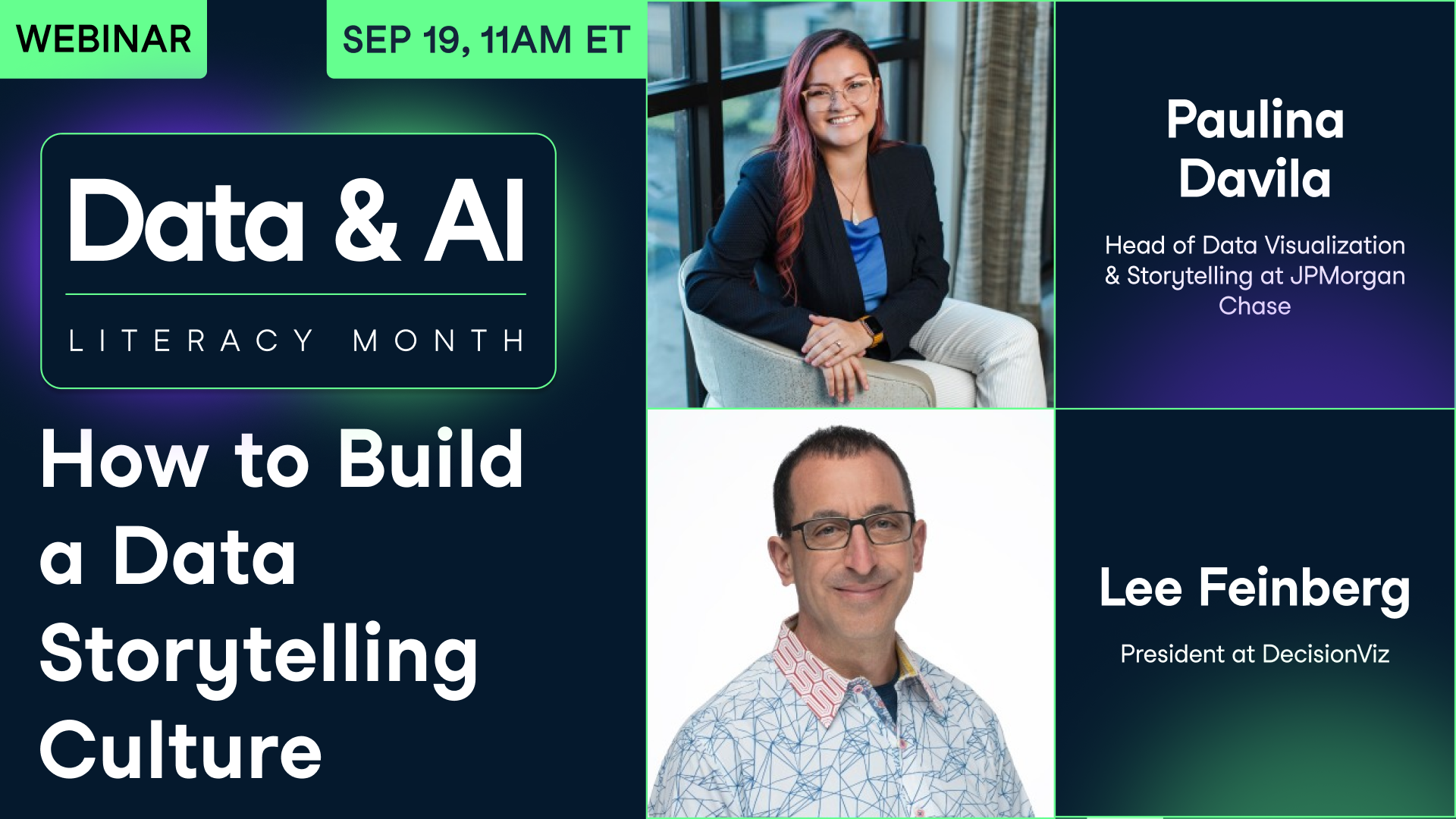Skip to main contentFor Business





Speakers
Training 2 or more people?
Get your team access to the full DataCamp library, with centralized reporting, assignments, projects and moreRelated
webinar
How to Write Effective Data Stories
In the second of three data storytelling sessions, a leading data journalist will teach you how to write about data.webinar
How to Create a Data Storytelling Culture
Discover how data storytelling and organizational data culture are interlinked.webinar
Creating Compelling Data Visualizations
In the first of three data storytelling sessions, three data visualization experts take you through how to create impactful visualizations for any audience.webinar
The Art of Data Storytelling: Driving Impact with Analytics
In this session, three industry leaders will shed light on the art of blending analytics with storytelling, a key to making data-driven insights both understandable and influential within any organization.webinar
From Insight to Impact with Data Storytelling
In this session, join Gary Wolf, Lea Pica and Jason Forrest as they delve into the world of data stories and how they play out in our lives.webinar
Effective Data Storytelling: How to Turn Insights into Action
Discover the three pillars of data storytelling - with expert Brent DykesJoin 5000+ companies and 80% of the Fortune 1000 who use DataCamp to upskill their teams.
Loved by thousands of companies


